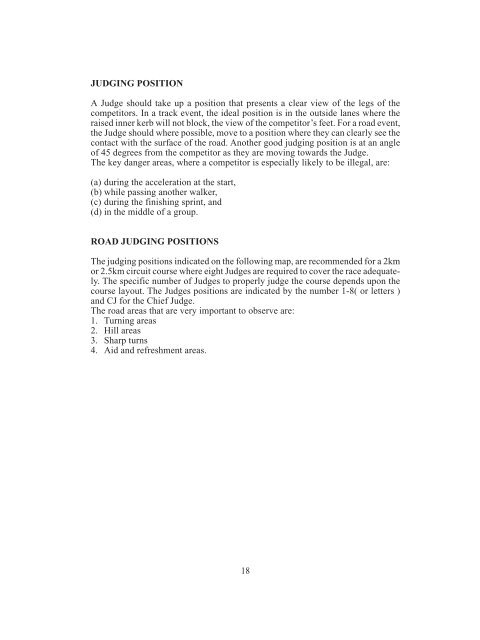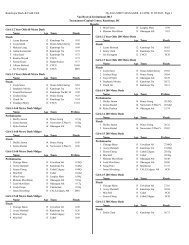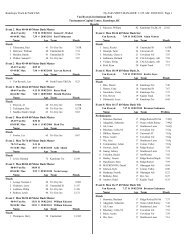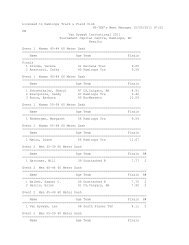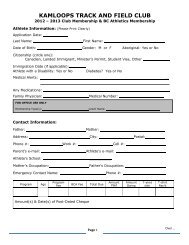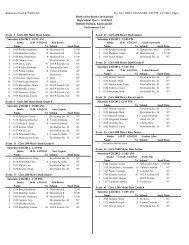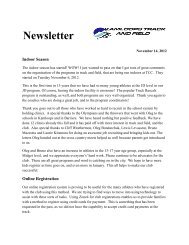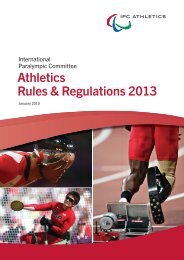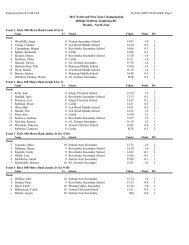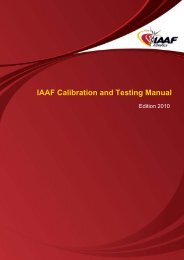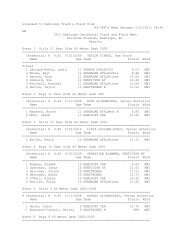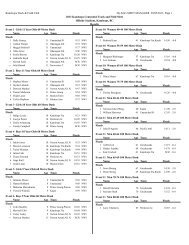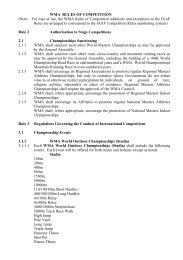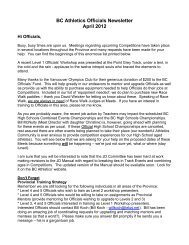Una guía para Jueces, oficiales, entrenadores y atletas
Una guía para Jueces, oficiales, entrenadores y atletas
Una guía para Jueces, oficiales, entrenadores y atletas
Create successful ePaper yourself
Turn your PDF publications into a flip-book with our unique Google optimized e-Paper software.
JUDGING POSITION<br />
A Judge should take up a position that presents a clear view of the legs of the<br />
competitors. In a track event, the ideal position is in the outside lanes where the<br />
raised inner kerb will not block, the view of the competitor’s feet. For a road event,<br />
the Judge should where possible, move to a position where they can clearly see the<br />
contact with the surface of the road. Another good judging position is at an angle<br />
of 45 degrees from the competitor as they are moving towards the Judge.<br />
The key danger areas, where a competitor is especially likely to be illegal, are:<br />
(a) during the acceleration at the start,<br />
(b) while passing another walker,<br />
(c) during the finishing sprint, and<br />
(d) in the middle of a group.<br />
ROAD JUDGING POSITIONS<br />
The judging positions indicated on the following map, are recommended for a 2km<br />
or 2.5km circuit course where eight Judges are required to cover the race adequately.<br />
The specific number of Judges to properly judge the course depends upon the<br />
course layout. The Judges positions are indicated by the number 1-8( or letters )<br />
and CJ for the Chief Judge.<br />
The road areas that are very important to observe are:<br />
1. Turning areas<br />
2. Hill areas<br />
3. Sharp turns<br />
4. Aid and refreshment areas.<br />
18


